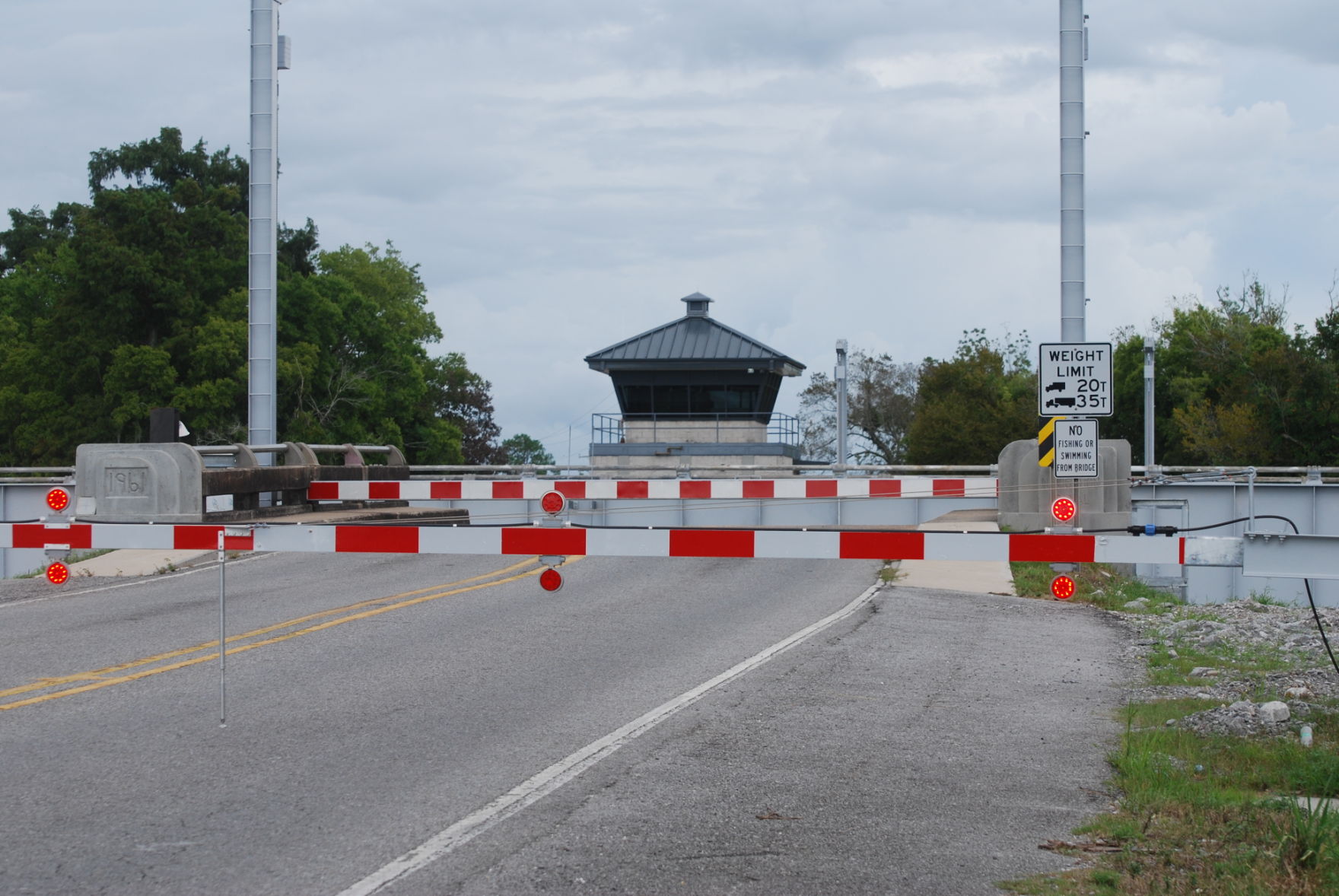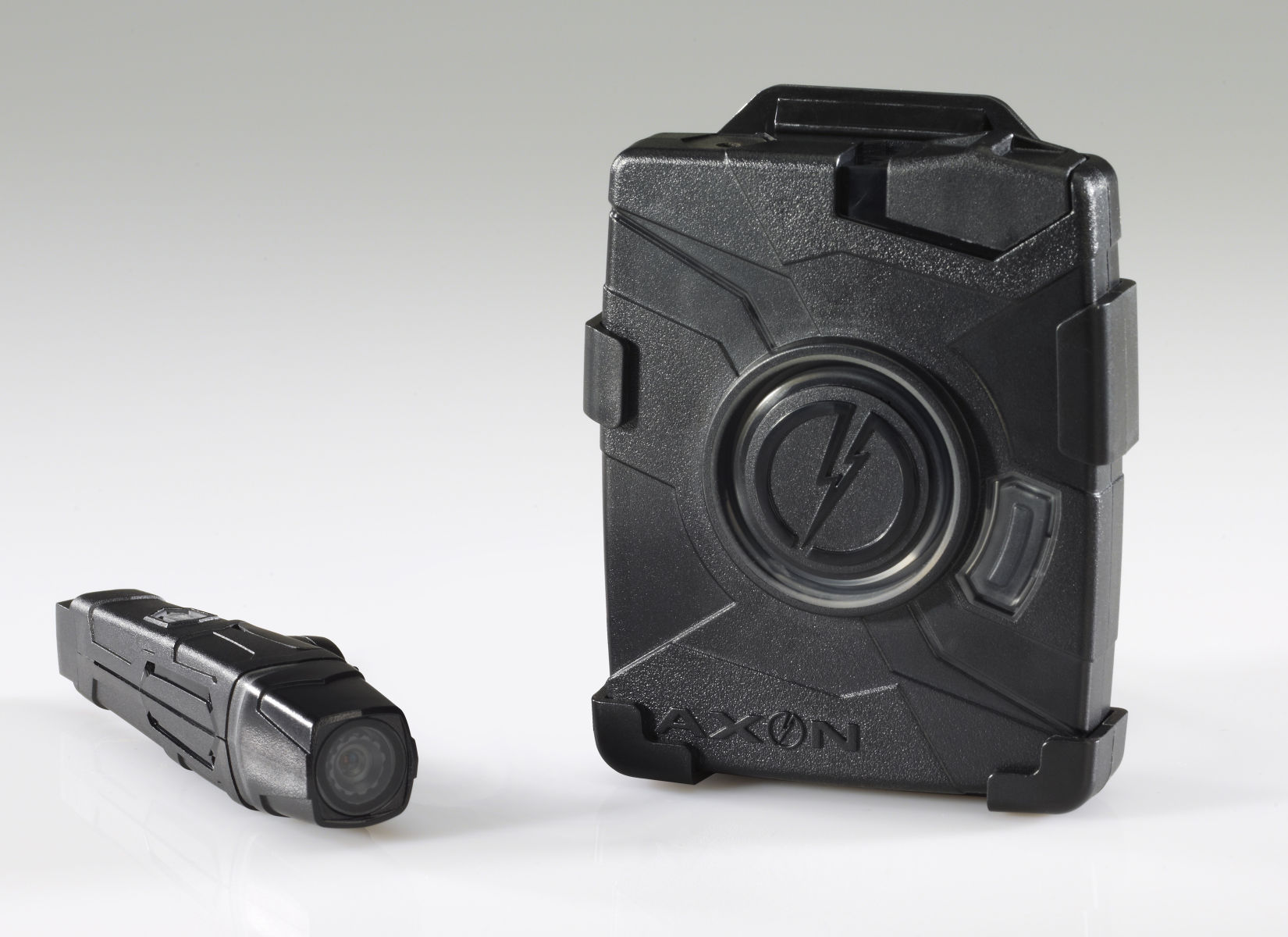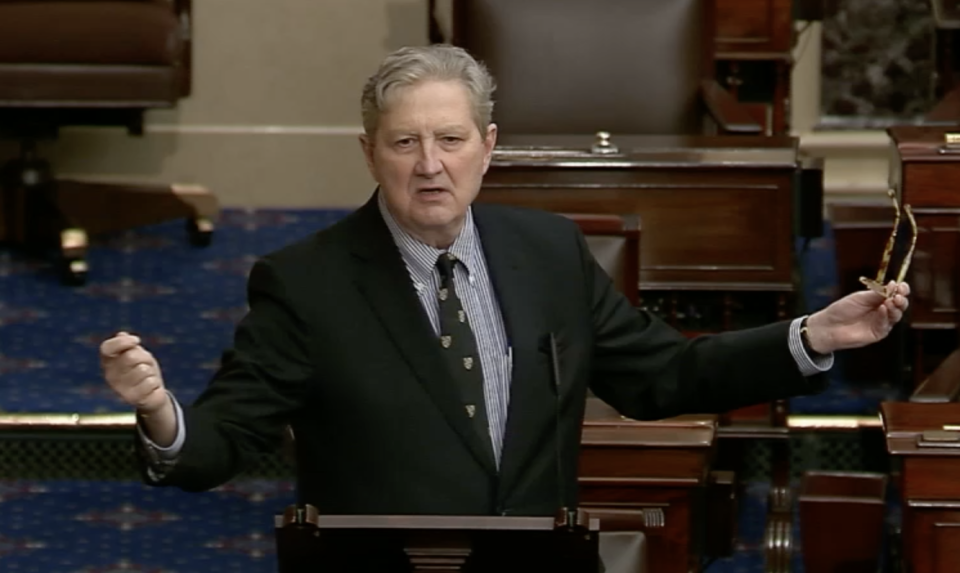
From the heart: Longtime volunteer on receiving end of generosity
September 16, 2014
Closures add miles, minutes to drive
September 16, 2014For more than a year prior to the tragic events in Ferguson, Missouri, which raised public awareness about police body cameras – or the lack thereof – bayou country law enforcement agencies have used them to varying degrees.
Already using the body cams with favorable results for his drug-fighting squad, Terrebonne Parish Sheriff Jerry Larpenter is sharpening his pencil and looking to order enough to equip all or most of his deputies with the devices.
The Houma Police Department is in the process of ordering 48 cameras, and the Thibodaux Police Department has already been recognized as a leader in the practice, cited during Baton Rouge discussions of whether the cameras are right for that municipality.
Overall, the consensus within law enforcement circles and beyond is that the cameras can help uncover police misconduct as well as aid with the defense of officers wrongly accused.
ZERO COMPLAINTS
Larpenter said since narcotics officers first used the cameras two years ago, he has received zero misconduct complaints.
“Personally, I think it is going to make a good cop even better,” Larpenter said. “And it will make an officer think about things. I know there are some bad cops out there. You have people that are bad and wear the uniforms for the wrong reasons, although that is a tiny minority. If there is a problem, we can look at it and try to determine who is at fault if you have a camera. If somebody files a false report and the camera shows they are lying, you can charge them with making a false report.”
Some questions remain unanswered, however, including whether the images from the body cameras are public record under Louisiana law. The jury is still out, and so far the question has not to anyone’s knowledge been raised.
Houma attorney Jimmy Dagate, who fields public records questions and complaints for Terrebonne District Attorney Joe Waitz Jr., said the recordings will likely be handled as other police records under the state’s public records act.
The law includes a generous exemption for law enforcement, particularly when an investigation is ongoing.
“Presumably those would be potentially exempt for that purpose. Once the investigation is completed, it is my understanding that law enforcement records may become public at that time.”
PRIVACY BALANCE
Recordings not related to a specific investigation raises thornier issues, which Dagate says would likely be viewed on a case-by-case basis.
“Under our state constitution, privacy issues are balanced with the issue of public access in determining whether or not a law enforcement record is public,” the attorney explained.
The cost of fitting Larpenter’s 15 narcotics officers with the cameras and the related software came to around $50,000.
His hope it to retrofit new cameras to the common software and hardware already in use.
Detailed studies on the benefits or drawbacks of body cameras are sparse, though opinions abound.
A study that was done in Rialto, California, was cited in a U.S. Department of Justice report on the use of cameras released last year by criminologist Michael White.
In Rialto, White’s report states, shifts of officers without cameras experienced twice as many incidents of use of force as shifts with cameras. A review of all use-of-force incidents during the study period shows that “officers without cameras were more likely to use force without having been physically threatened. This occurred in five of the 17 use-of-force incidents involving officers without cameras.”
Jerome Boykin, who as president of the Terrebonne Parish Branch of the National Association for the Advancement of Colored People has aided citizens with complaints against officers, said he welcomes expanded use of cameras.
“I see it as beneficial for the police and beneficial for the public,” Boykin said.
CREATING TRANSPARENCY
Andrew Grace is a company representative for Taser International, which has sold most local police agencies their camera systems.
While the shooting in Ferguson focused more attention from the general public to cameras, Grace maintains that the evolution of their use was already well on its way before that.
“We are out of the early adoption stage,” he said. “That was very tragic, and if there was a video surveillance body camera it would create transparency.”
Grace said his company’s system includes a camera that is always running while the officer wears it. Whether the camera begins recording is up to the officer. When the record switch is turned on, the camera automatically includes the last five seconds of what it saw prior to the activation.
This, Grace explains, allows for a record with better context, particularly if a situation has escalated in the seconds prior to the switch-on.
UNANSWERED QUESTIONS
That officers control what gets recorded and when has caused problems in some jurisdictions. In Los Angeles, officers used a great deal of selectivity in determining when the camera should be activated, which caused criticism.
Local departments are developing policies that generally require the cameras be turned on with the commencement of any citizen contact.
Despite generally positive reviews, criminal justice experts say there is a desperate need for independent research to validate anecdotal reports.
“Most of the claims made by advocates and critics of the technology remain untested,” White wrote in his DOJ report. “Federal agencies that support research and development should consider providing funding streams for comprehensive research and evaluation of body-worn camera systems. Researchers should examine all aspects of the implementation and impact of the technology – from its perceived civilizing effect, evidentiary benefits and impact on citizen perceptions of police legitimacy to its consequences for privacy rights, the law enforcement agency and other outside stakeholders.”
POLICIES RECOMMENDED
The Taser camera can mount on clothing or accessories, and its video, usually at the end of a shift, is uploaded to a computer using a standard USB cable. Other means of transmitting, such as Bluetooth or wireless, are also available.
The cameras themselves run just under $400 each, and the cost of software will depend on the options and methods chosen.
Law enforcement officials have not yet looked at the question of whether bad guys might try to harm an officer to de-activate the camera. Some concerns have been raised about the camera being one more item that assailants can use to harm officers by grabbing on to them, although no known reports of problems relating to that exist.
The White report recommends that all departments using body cameras have specific policies in place and includes a template model policy.
“If cameras are to be used, policies and procedures will have to be put in place, or expanded on, to address several legal issues,” the White report states. “These issues extend beyond the more obvious privacy and civil liberties protections toward which agencies must be sensitive.
“For example, a policy would have to address when a camera should be used and when it should be turned on or not turned on to ensure fair treatment of all citizens,” the report continues. “Parameters would need to be set for voluntary, compulsory and prohibited use of the camera. Camera video may also be considered a public record item and a procedure would need to be created for public assessment and information requests. This policy should be in place before any testing or deployment.”
The Thibodaux Police Department has a full written policy for body cam use. Maj. Mike Solet of the Terrebonne Parish Sheriff’s Office said a policy is under development and should be in place soon.
Police body cameras provide law enforcement and the public protection, authorities and officials say.













